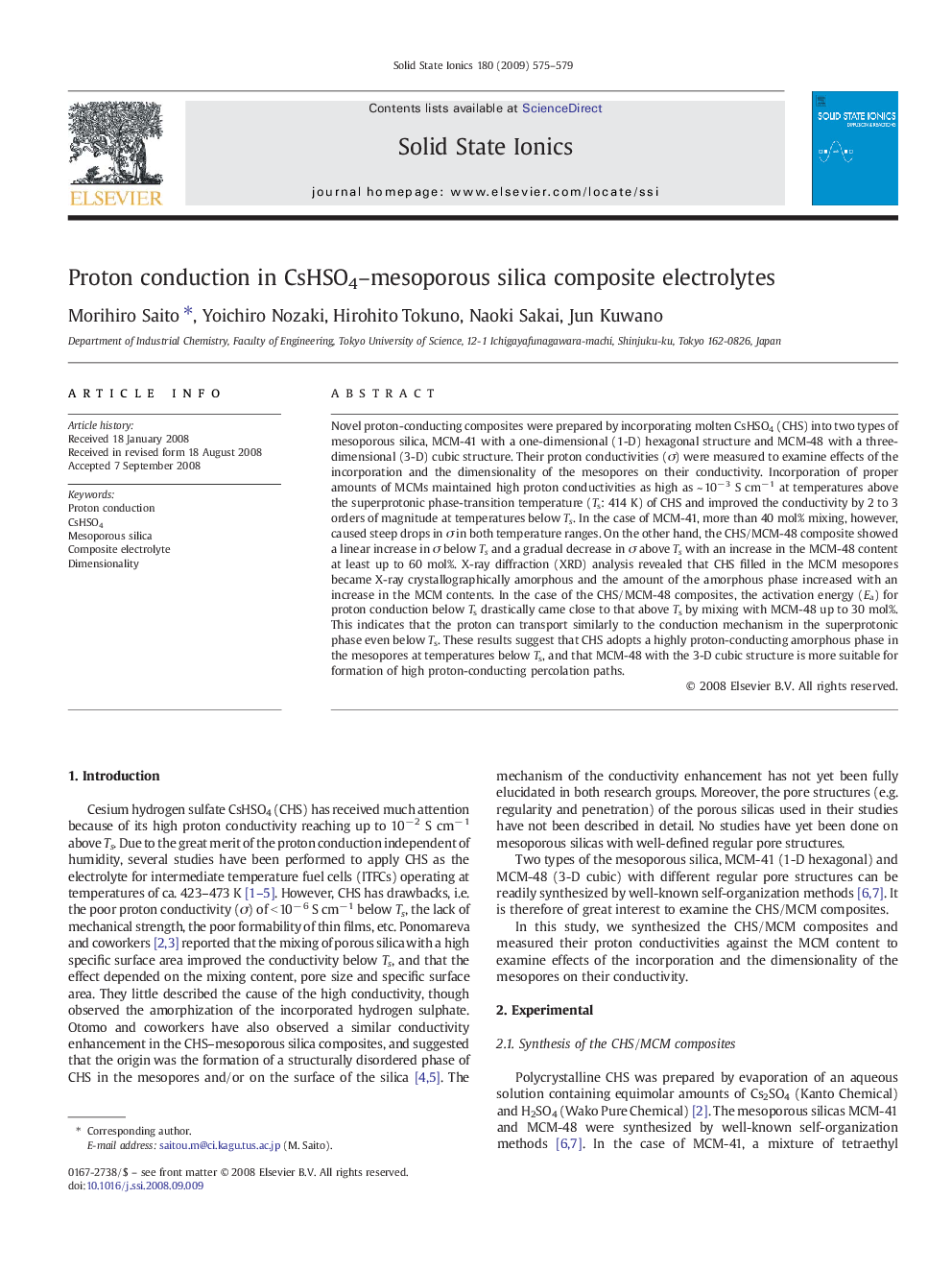| Article ID | Journal | Published Year | Pages | File Type |
|---|---|---|---|---|
| 1297880 | Solid State Ionics | 2009 | 5 Pages |
Abstract
Novel proton-conducting composites were prepared by incorporating molten CsHSO4 (CHS) into two types of mesoporous silica, MCM-41 with a one-dimensional (1-D) hexagonal structure and MCM-48 with a three-dimensional (3-D) cubic structure. Their proton conductivities (Ï) were measured to examine effects of the incorporation and the dimensionality of the mesopores on their conductivity. Incorporation of proper amounts of MCMs maintained high proton conductivities as high as ~ 10â 3 S cmâ 1 at temperatures above the superprotonic phase-transition temperature (Ts: 414 K) of CHS and improved the conductivity by 2 to 3 orders of magnitude at temperatures below Ts. In the case of MCM-41, more than 40 mol% mixing, however, caused steep drops in Ï in both temperature ranges. On the other hand, the CHS/MCM-48 composite showed a linear increase in Ï below Ts and a gradual decrease in Ï above Ts with an increase in the MCM-48 content at least up to 60 mol%. X-ray diffraction (XRD) analysis revealed that CHS filled in the MCM mesopores became X-ray crystallographically amorphous and the amount of the amorphous phase increased with an increase in the MCM contents. In the case of the CHS/MCM-48 composites, the activation energy (Ea) for proton conduction below Ts drastically came close to that above Ts by mixing with MCM-48 up to 30 mol%. This indicates that the proton can transport similarly to the conduction mechanism in the superprotonic phase even below Ts. These results suggest that CHS adopts a highly proton-conducting amorphous phase in the mesopores at temperatures below Ts, and that MCM-48 with the 3-D cubic structure is more suitable for formation of high proton-conducting percolation paths.
Related Topics
Physical Sciences and Engineering
Chemistry
Electrochemistry
Authors
Morihiro Saito, Yoichiro Nozaki, Hirohito Tokuno, Naoki Sakai, Jun Kuwano,
